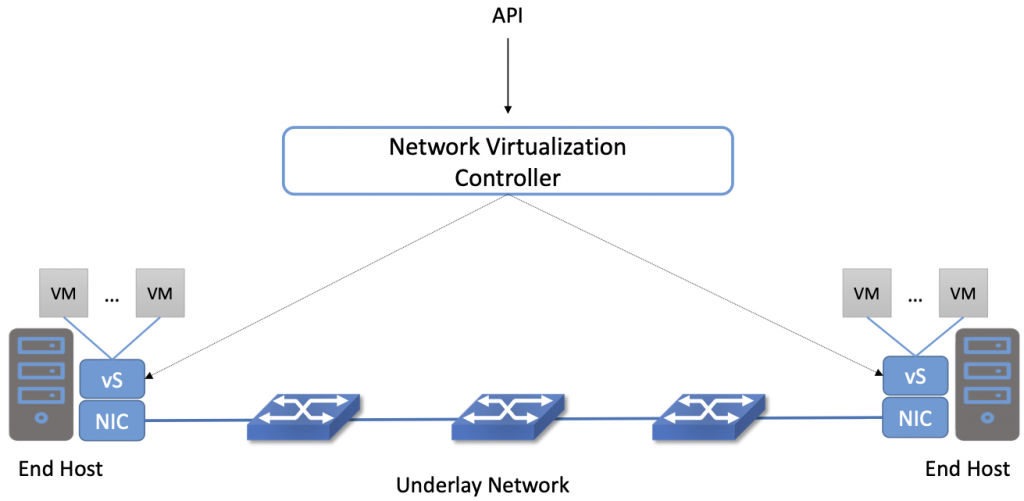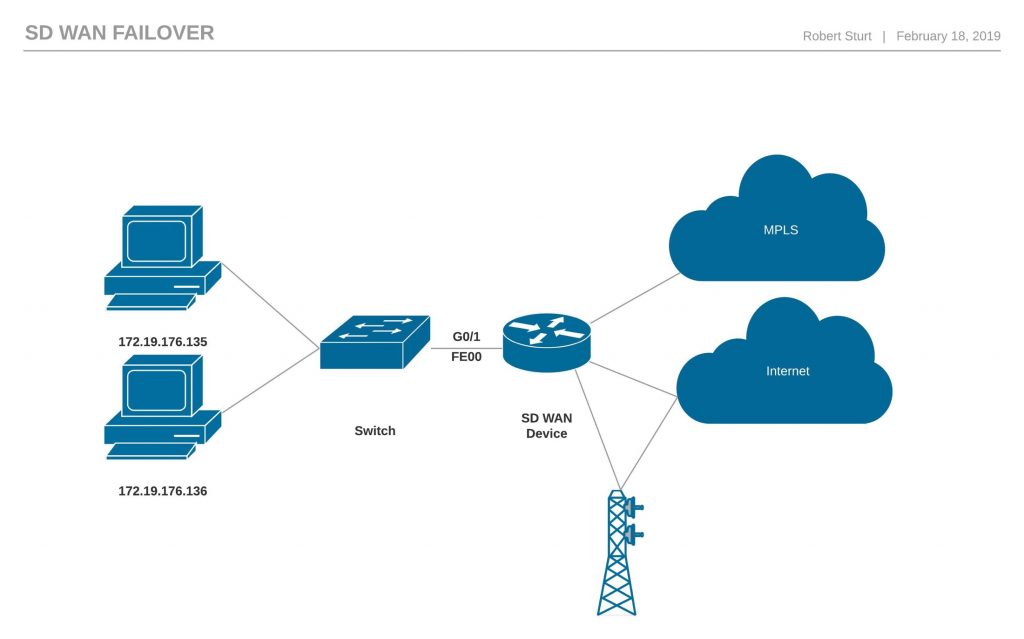CompTIA NET+ | Software-defined networking (SDN)

Software-defined networking (SDN) is the decoupling of the network control logic from the devices performing the function, such as routers, which control the movement of information in the underlying network. This approach simplifies the management of infrastructure, which may be specific to one organization or partitioned to be shared among several.
SDN features controllers that overlay above the network hardware in the cloud or on-premises, offering policy-based management. Technically speaking, the network control plane and forwarding plane are separated from the data plane (or underlying infrastructure), enabling the organization to program network control directly. This differs significantly from traditional data center environments. In a traditional environment, a router or switch — whether in the cloud or physically in the data center — will only be aware of the status of network devices adjacent to it. With SDN, the intelligence is centralized and prolific; it can view and control everything.

The components of software-defined networking
Software-defined networking (SDN) consists of three main components that may or may not be located in the same physical area:
. Applications that relay information about the network or requests for specific resource availability or allocation.
. SDN controllers that communicate with the applications to determine the destination of data packets. The controllers are the load balancers within SDN.
. Networking devices that receive instructions from the controllers regarding how to route the packets.
In addition to these components, OpenFlow is a programmable networking protocol that directs traffic among network devices and is used in SDN. The Open Networking Foundation (ONF) helped to standardize the OpenFlow protocol and other open source SDN technologies. These components work together to form SDN ecosystems to ensure proper network traffic flow.
The role of virtualization in software-defined networking
The term “Virtual Network” is sometimes erroneously used synonymously with the term SDN. These two concepts are distinctly different, but they do work well together.
Network functions virtualization (NFV) segments one or many logical, or virtual, networks within a single physical network. NFV can also connect devices on different networks to create a single virtual network, often including virtual machines as well.
SDN actually works well with NFV. It assists by refining the process of controlling data packet routing through a centralized server, improving visibility and control.

Software-defined networking functions
SDN technology enables organizations to quickly manage and reconfigure network resource usage using automated provisioning and policy-based management. The automation and policy-based management help organizations respond to fluctuations in resource demand and traffic and ensures optimal efficiency of network resources.

Why is software-defined networking useful?
There are many benefits of software-defined networking (SDN) architecture, several of which stem from the centralization of network control and management as well as the ease of scalability, evolution and change implementation. Some of the benefits are as follows:
. Ease of network control via direct programming resulting from the separation from forwarding functions.
. Agility and the ability to dynamically use load balancing to manage the traffic flow as need and usage fluctuates. This reduces latency, increasing the efficiency of the network.
. Greater granularity of control over security. SDN lets network administrators set policies from one central location to determine access control and security measures across the network by workload type or by network segments. You can also use micro segmentation to reduce complexity and establish consistency across any network architecture — whether public cloud, private cloud, hybrid cloud or multi cloud.
. Ease of configuration. With SDN, automated programs can be more easily written, enabling the organization to configure, secure and optimize resources as needed.
. Simplified network design and operation through the use of open controllers rather than vendor-specific devices and protocols.
Different types of software-defined networking
There are four primary types of software-defined networking (SDN), each with its own merits:
. Open SDN uses open protocols to control the virtual and physical devices responsible for routing the data packets.
. API SDN uses programming interfaces, often called southbound APIs, to control the flow of data to and from each device.
. Overlay Model SDN creates a virtual network above existing hardware, providing tunnels containing channels to data centers. This model then allocates bandwidth in each channel and assigns devices to each channel.
. Hybrid Model SDN combines SDN and traditional networking, allowing the optimal protocol to be assigned for each type of traffic. Hybrid SDN is often used as a phase-in approach to SDN.
The risks of software-defined networking
As we have seen, SDN can be beneficial to an organization in many ways, including increasing agility and control, simplifying management and configuration and providing stronger security. The controller is critical in maintaining a secure network. It is centralized and, therefore, a potential single point of failure. This potential vulnerability can be mitigated by implementing controller redundancy on the network with automatic fail-over. This may be costly but is no different from creating redundancy in other areas of the network to ensure business continuity.
SD-WAN for the win
Service providers and organizations alike can benefit from a software-defined wide area network, or SD-WAN. An SD-WAN is programmatically configured and provides a centralized management function for any cloud, on-premises or hybrid network topology in a wide area network. The appeal of SD-WAN is that it will support multiple types of connectivity, including SDN, virtual private networks, MPLS and others.

Product categories
Are you looking to break into the exciting field of Networking? Join our 5-day CompTIA Network+ Bootcamp Training and build your networking knowledge and skills.






